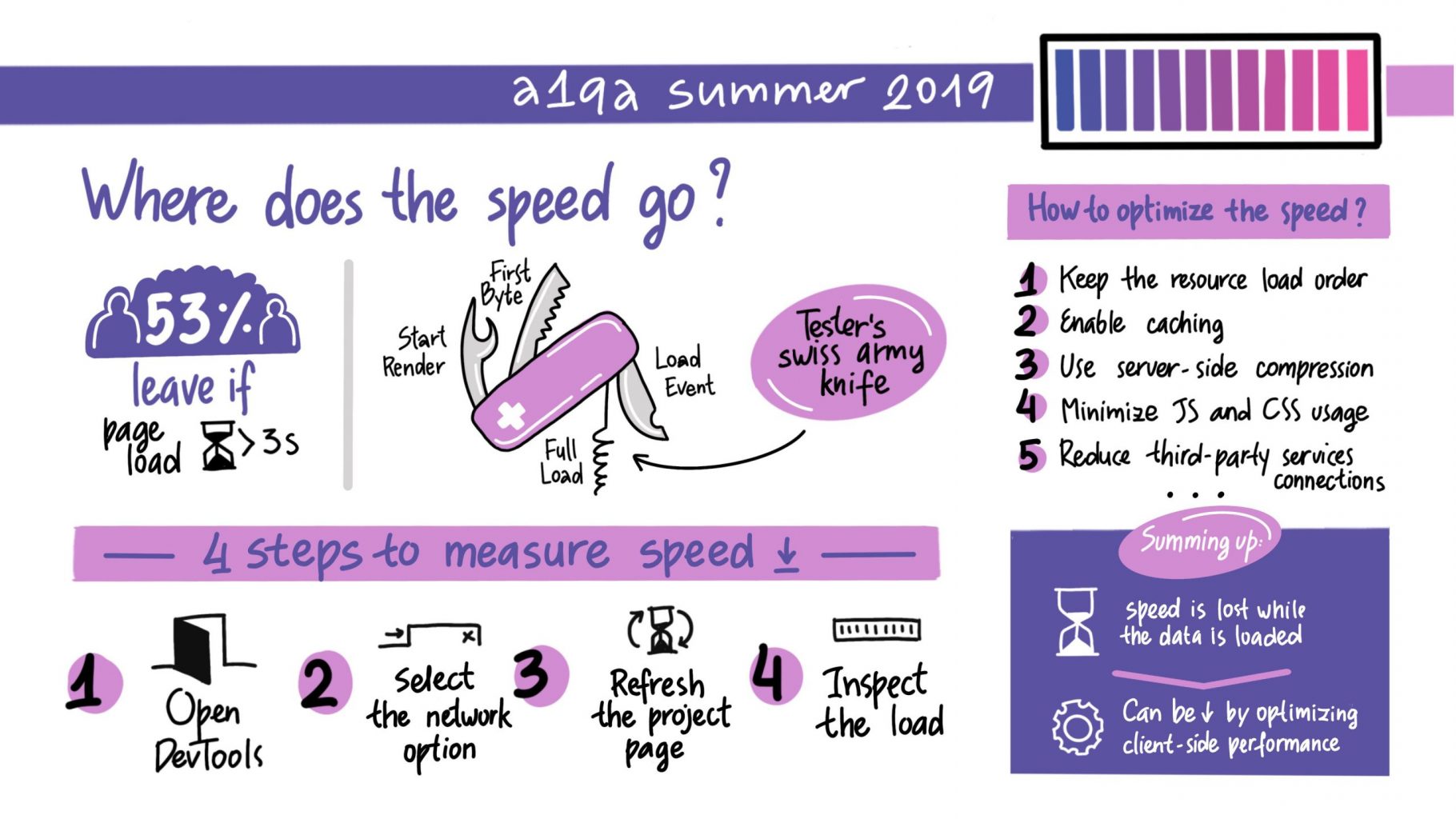
How to enhance performance of your web software product?
Digitalization is pushing many companies to develop state-of-the-art software products faster than competitors do to grow their businesses. And this movement towards the creation of new technical capabilities is bearing fruit. Web services perform hundreds of diverse tasks to optimize production processes, which saves companies’ resources and provides end users with more useful options.
Let’s take as an example world-renowned manufacturers, retailers, and marketers of goods that introduce new technologies allowing remotely monitor the condition of machines creating the products. Experts can study the problem at the factory remotely and make recommendations on troubleshooting. This helps reduce the number of business trips, which saves money for companies.
Other businesses go even further and develop their digital projects to create IT products. They increase the recognition of the company and attract a new audience.
Let’s take a look at one success story. A media company owning a magazine-format newspaper decided to make a successful digital shift to the online space. To align customers’ expectations from the world over and provide them with a quick and stable digital version of the solution, the client turned to performance testing, a series of checks on the system’s responsiveness to high load. The results of these tests helped to adjust the software product to the end users’ needs. By now, the news portal continues to work smoothly after the launch of the online version.
However, this update process could have failed if the newspaper’s website hadn’t withstood the influx of new users. How to avoid such possible incidents? The decision is to collect more information about the work of an IT product in different conditions and under different circumstances.
There is no need to introduce performance testing, which helped achieve the business need in the above-mentioned success story. In this article, we will highlight its main types and discuss, which metrics to take into account for tracking the flawless functioning of the system.
Components of performance testing
As you know, who owns the information, he owns the world. In this case, those who own the information are likely to develop the web product more successfully.
The stable and smooth functioning of the software depends on an understanding of the state of the server, systems, and infrastructure. Up-to-date performance data allows the QA team to respond quickly to software problems and solve them.
What software indicators are analyzed throughout the performance testing process?
- Behavior under expected load
- Work with different configurations
- Stability over time
- Scalability features
- Productivity with increasing data volume
- Capacity limits
Now we are moving to discuss each of these indicators in more detail.
- Behavior under expected load (load testing)
Implementation of this performance testing type helps evaluate and predict the behavior of the system under real-life load conditions when multiple users utilize it simultaneously.
If you don’t know how your web product works under a specific expected load, then how can you be sure that it will function as required every day?
- Work with different configurations (configuration testing)
A web service can be run on different devices and platforms. Configuration testing helps predict the behavior of the software product operating with complex combinations of software and hardware configurations. It will allow timely detecting defects in the web service and eliminate them before go-live.
- Stability over time (stability testing)
This verification type can allow you to evaluate the stability of the software product over a certain period. Indeed, if now the system does not fail, it is not a confirmation of the web service impeccability. Stability testing defines the ability of your software product to work over a long period of use and not to crash at any moment.
- Scalability features (scalability testing)
The goal of scalability testing is to reveal that a system can adapt to changing conditions while increasing the processing power and changing the architecture. Scalability checks verify that your application is ready for critical situations like when the user traffic is scaling up or down.
- Productivity with increasing data volume (volume testing)
This type of performance testing is necessary if you are wondering how the web service can behave when stored user and system data volumes in the database are increased. Volume testing is perfect for long-running projects and is conducted to ensure the system can cope with a large amount of data used. It also reveals such bottlenecks as insufficient memory resources, incorrect storage and loss of data.
- Capacity limits (stress testing)
The main goal of this type of verification is to figure out the maximum load that a system can handle without failures. You can also evaluate whether the system is available when processor time, memory, network channel width are changing under the increased load.
Stress testing also allows defining the time that the software needs to return to the normal state after stress conditions. In addition, one can make sure that valuable data is saved before crashing, and this crashing does no harm to the tested system.
Information analysis methods
All these performance testing types help identify possible defects and eliminate them promptly. And this is what is also important to know about your software product – system bottlenecks and the real level of software quality.
When choosing indicators for assessing the quality, you can focus on the following factors:
- Conditions for the information collection and analysis
- Accuracy of data analysis
- Importance of specific criteria.
The real assessment of software quality is based on metrics, which are the particular characteristic measurements. For example, value indicators for web services are speed and completeness of page loading, factors for evaluating user convenience, and more.
We suggest considering these valuable indicators:
- Response time
- Concurrent users
- Requests per second
- Transactions per second
- Error rate.
What does each of these indicators mean, and why should it be considered when evaluating the quality of a software product? Let’s specify.
- Response time
It is a measure of the time during which the server completes a user request. A lengthy page or image loading may indicate poor web service performance. The optimal indicator of this parameter depends on the characteristics of the product and other external factors. The average rate for a request should not exceed 3 seconds.
When evaluating the response time, it is worth considering not only average indicators but also the peak ones that can help identify not obvious system bottlenecks.
For example, the average page loading time for a mobile application is 2 seconds. This is an acceptable indicator. But a large image increases the download time to 10 seconds. This is a peak indicator that identifies the performance bottleneck of a web product.
Realizing such details will help you better understand the capabilities of the software product.
At the traditional summer professional conference, our performance testing experts covered the topic of optimized page loading speed. You can see at the picture below the cherry-picked points from the presentation.

- Concurrent users
Do you know how many virtual users can use your web service in parallel?
This metric allows you to identify problems with the inability to work under high load. It is important to consider this indicator on the eve of the planned influx of users. After all, the inability to cope with the requests of many users can lead to disruption of the regular operation of the application. And possible freezes or incorrect query execution can cause the opposite effect – the outflow of users.
- Requests per second
The number of successful requests per second is another important measure of web application performance. This metric takes into account all possible options for the interaction of the user and the software product (information search, loading or unloading of data, etc.).
After all, low rates of the number of requests processed per second might be a result of unsatisfactory server operation.
- Transactions per second
In this case, we are talking about those operations that, when executed, turn into a single chain. An example of a transaction is the transfer of money from one account to another, adding a product to the cart, or subscription to the news.
This indicator reflects the number of completed transactions for a specific time. The metric reveals the maximum user load.
For the user, a low transaction rate per second means a decrease in the speed of specific tasks. The timely detection of defects in this area will make the software product more flawless.
- Error rate
The error rate indicates the frequency of errors in the working software product. This metric depends on the number of concurrent users and queries.
An increase in the number of errors during the testing process indicates a problem state of the system. This takes the software product beyond stable operation.
The error rate is not a universal and accurate indicator. We can say with confidence that an error rate that is close to 0 confirms the high quality of the software product.
These are significant but not the only factors for evaluating the effectiveness of a software product. It may seem that a greater number of measurable factors can make the project better. But it’s not.
There are two extremes:
- Attempts to measure every issue of the project
- Ignoring quality indicators.
Both approaches in their pure form are ineffective. It is important to control the software product quality and refer to the necessary and relevant indicators.
Summarizing
Evaluation of software quality is a key requirement for its successful development. A series of tests that assess the behavior of the service under high load or load scaling can form a complete picture of the product. Metrics help evaluate the system’s performance and accurately identify system bottlenecks that may entail difficulties in using the IT product.
Do you know everything about your web application performance? Get a free consultation with the a1qa experts on your software quality issues.









